History
Sweetpotatoes are an important crop to the people of North Carolina and their rich history of growing the vegetable dates back centuries. Sweetpotatoes, which became the official state vegetable in 1995, are now enjoyed all over the world as a satisfying and versatile vegetable with a well-earned reputation for being nutritious.
Discover the history of the sweetpotato and how they became a staple in North Carolina below.

Historians believe that sweetpotatoes are possibly the oldest cultivated crop in the world, originating in Central or Southern America.
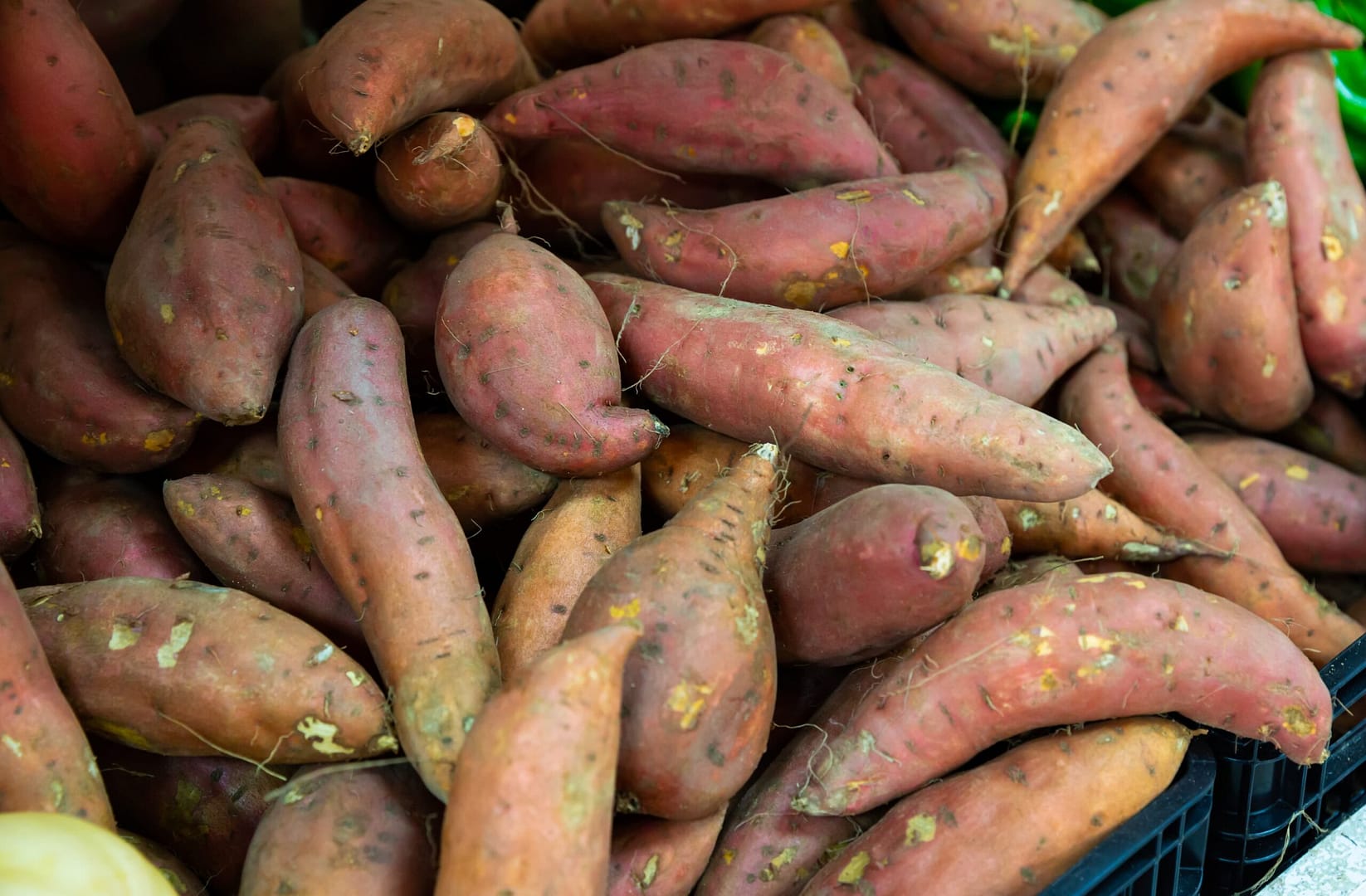
When Columbus arrived in America in 1492, Native Americans were already growing sweetpotatoes in the South-eastern United States.

With European settlers in the area, sweetpotatoes became a cornerstone in sustenance farming. The distinctive sandy soil and hot, moist climate of North Carolina is ideal for cultivating sweetpotatoes.

Sweetpotatoes became one of the most grown vegetable crops in North Carolina and cemented themselves a staple in southern cuisine.

The North Carolina Sweetpotato Commission was founded and chartered by six visionary sweetpotato producers. This marked the start of the journey to transform North Carolina into the top sweetpotato-producing state in the U.S.
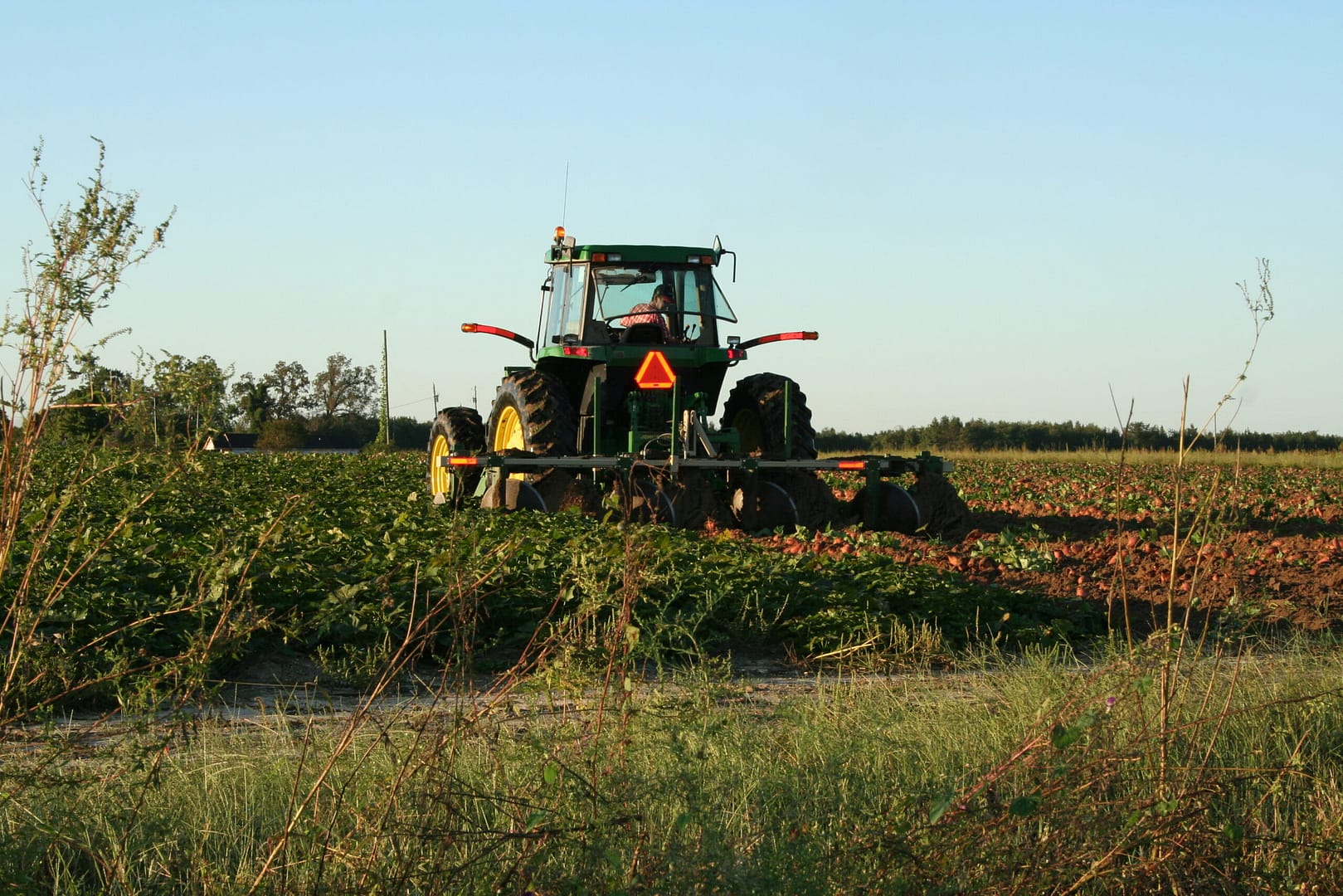
Just ten years after its formation, North Carolina achieved the coveted rank of No. 1 sweetpotato-producing state in the U.S. This achievement has been maintained every year since, contributing to North Carolina’s reputation in the sweetpotato industry.

The one-word spelling of sweetpotato is officially adopted by the National Sweetpotato Collaborators to distinguish sweetpotatoes from white potatoes.
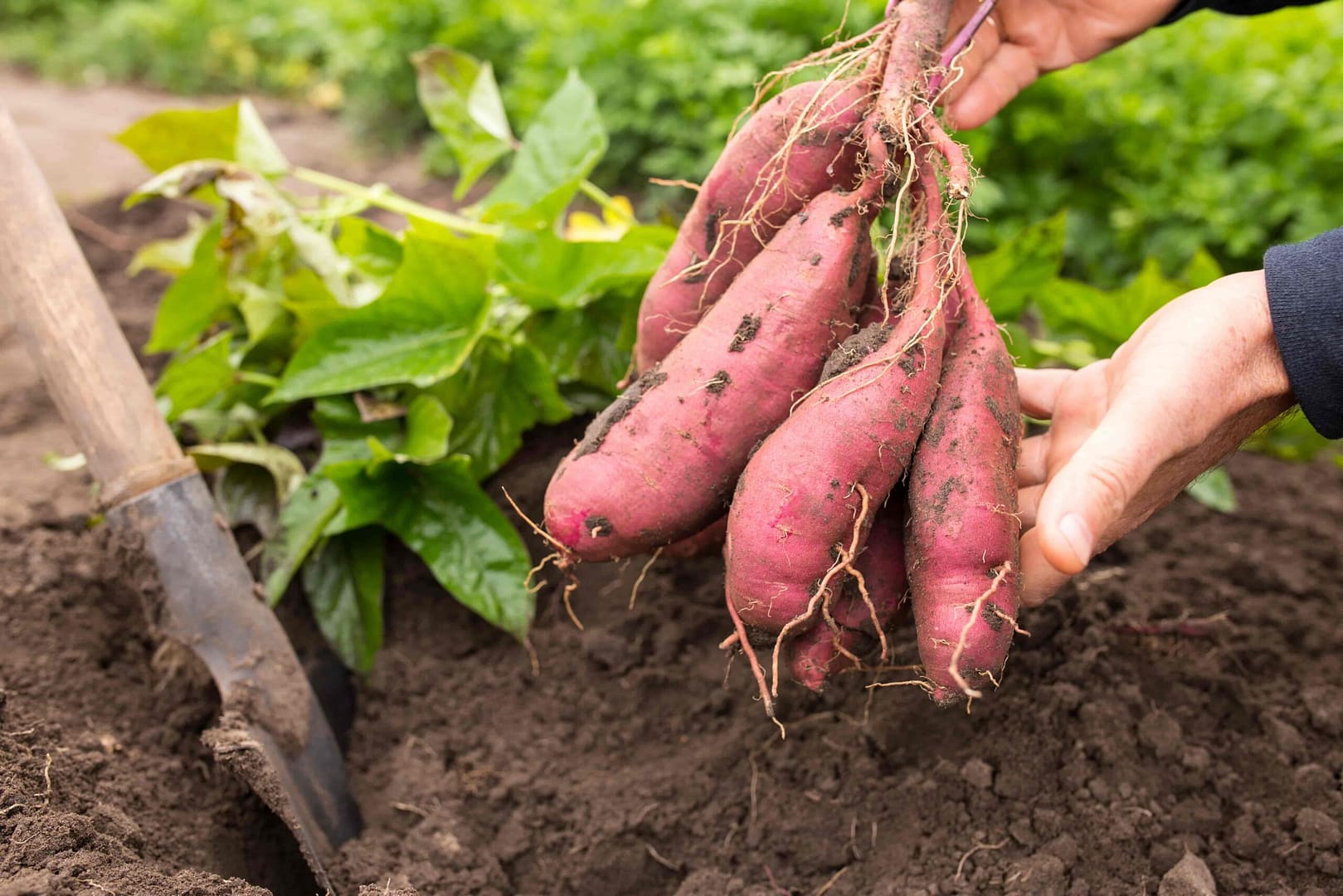
According to the USDA (United States Department of Agriculture), North Carolina harvested nearly 95,000 acres of sweetpotatoes in 2016, surpassing the combined harvest of California, Louisiana, and Mississippi by almost 30,000 acres.

In 2021, the Commission celebrated its 60th anniversary, a testament to the enduring legacy of the six sweetpotato farmers who chartered the Commission in 1961.

As of today, North Carolina plays a pivotal role in the global sweetpotato market, exporting 60% of all sweetpotatoes from the United States. Annually, the state contributes over $151 million in sweetpotato exports to 34 countries, showcasing the international impact of North Carolina’s sweetpotato industry.

Farming process
Starting the journey
Unlike Irish or white potatoes, the sweetpotato story doesn’t start with seeds. Instead, they are grown from cuttings called sprouts or slips. Some farmers start the sprouts in a greenhouse, while others grow sprouts by “bedding” sweetpotatoes in March.
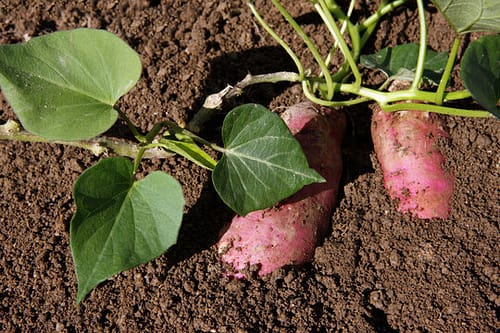
Transplanting for success
Come April, May and June, the sprouts are cut and then planted into one of the 34,000 hectares of North Carolina sweetpotato fields. Farmers carefully relocate the sprouts to ensure optimal growth conditions – this is known as transplanting.

Growing up
Sweetpotatoes need around 90-120 frost-free days to grow and mature. They grow underground in the fertile and nutrient-dense North Carolina soil.

Harvesting time
As the calendar turns to August, the sweetpotato harvest begins. Tractors gently flip the sweetpotatoes onto the surface before they’re harvested by hand to protect their delicate skin. The harvested sweetpotatoes are then graded and sorted based on their size.

The storing process
To ensure a year-round supply of sweetpotatoes, North Carolina State University developed an innovative ventilation system so farmers can store sweetpotatoes for up to 12 months.
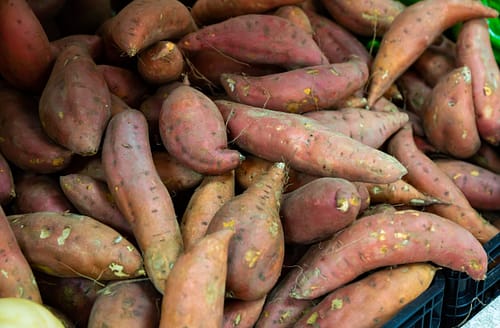
Curing for quality
When the sweetpotatoes are ready to be exported, they’re transferred to a special room where they are cured for three to five days at 30 centigrade and high humidity.
This essentially wakes the sweetpotato back up, tightening the skin and enabling the starch to turn to sugar. If left untreated, they would turn green and the taste would be affected.

Exporting across Europe
The cured sweetpotatoes are then cleaned and exported by shipping container. It takes 14 days for the sweetpotatoes to arrive in Rotterdam before continuing their journey to restaurants, supermarkets, and plates across Europe.




